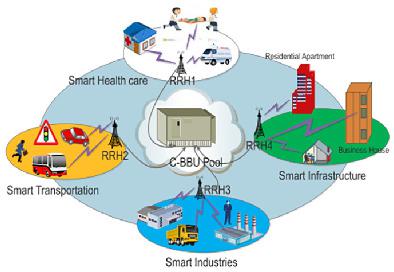当前位置:
X-MOL 学术
›
Trans. Emerg. Telecommun. Technol.
›
论文详情
Our official English website, www.x-mol.net, welcomes your
feedback! (Note: you will need to create a separate account there.)
Exploring power consumption reduction in centralized radio access for energy‐efficient centralized‐Internet of Things implementation
Transactions on Emerging Telecommunications Technologies ( IF 2.5 ) Pub Date : 2020-07-19 , DOI: 10.1002/ett.4045 Byomakesh Mahapatra 1 , Ashok Kumar Turuk 1 , Sarat Kumar Patra 2
Transactions on Emerging Telecommunications Technologies ( IF 2.5 ) Pub Date : 2020-07-19 , DOI: 10.1002/ett.4045 Byomakesh Mahapatra 1 , Ashok Kumar Turuk 1 , Sarat Kumar Patra 2
Affiliation

|
The advent of new wireless and Internet of Things (IoT) technology has increased the dependency on the cellular base stations (BS). The rapid growth in IoT and wireless devices impinges many challenges on cellular services providers and manufacturers. The Centralized Radio Access Network is an energy and cost‐efficient solution for the next‐generation BS architecture. In this article, we have proposed a centralized‐IoT (C‐IoT) architecture based on centralized BS (C‐BS). We evaluated different base station technologies and compared the C‐BS with the traditional distributed BS (D‐BS) architecture for power consumption. A mathematical model for power consumption for both types of BS is proposed. We have analyzed the impact of variation in traffic load on power consumption for both types of BS architecture. The simulation result shows that C‐BS architecture has the potential to save around 40% to 50% energy compared with D‐BS architecture.
中文翻译:

探索降低集中式无线电接入中的功耗以实现节能的集中式物联网实施
新的无线和物联网(IoT)技术的出现增加了对蜂窝基站(BS)的依赖性。物联网和无线设备的快速增长给蜂窝服务提供商和制造商带来了许多挑战。集中式无线接入网是下一代BS体系结构的一种节能高效的解决方案。在本文中,我们提出了基于集中式BS(C-BS)的集中式IoT(C-IoT)架构。我们评估了不同的基站技术,并将C-BS与传统的分布式BS(D-BS)体系结构进行了功耗比较。提出了用于两种类型的BS的功耗的数学模型。我们分析了两种类型的BS体系结构中流量负载变化对功耗的影响。
更新日期:2020-07-19
中文翻译:

探索降低集中式无线电接入中的功耗以实现节能的集中式物联网实施
新的无线和物联网(IoT)技术的出现增加了对蜂窝基站(BS)的依赖性。物联网和无线设备的快速增长给蜂窝服务提供商和制造商带来了许多挑战。集中式无线接入网是下一代BS体系结构的一种节能高效的解决方案。在本文中,我们提出了基于集中式BS(C-BS)的集中式IoT(C-IoT)架构。我们评估了不同的基站技术,并将C-BS与传统的分布式BS(D-BS)体系结构进行了功耗比较。提出了用于两种类型的BS的功耗的数学模型。我们分析了两种类型的BS体系结构中流量负载变化对功耗的影响。











































 京公网安备 11010802027423号
京公网安备 11010802027423号